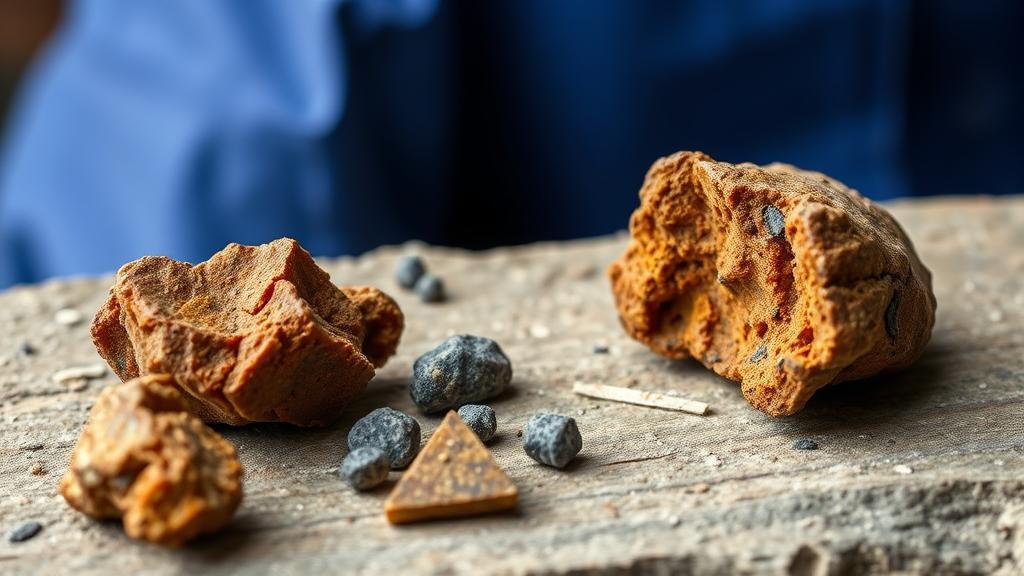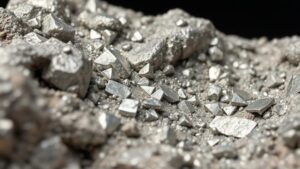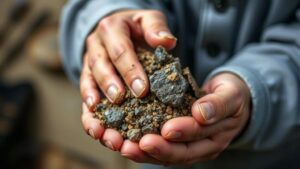Ancient Techniques for Identifying Ore Using Taste and Texture
Ancient Techniques for Identifying Ore Using Taste and Texture
Throughout history, civilizations have relied on a variety of methods to identify valuable metallic ores. While modern techniques involve advanced technology and chemical analysis, ancient miners employed simpler methods that relied heavily on sensory perceptions, particularly taste and texture. This article explores these ancient techniques, providing insight into how they were employed and their scientific rationale.
Sensorial Identification of Ores
In antiquity, the ability to distinguish between different minerals was crucial for successful mining and metallurgy. Two primary senses were utilized: taste and texture. These methods predated formal geological science yet were based on empirical observations accumulated over generations.
Taste as an Indicator
Taste was utilized predominantly by metallurgists and miners to identify specific ores. Certain minerals have distinct flavors due to their chemical compositions, which can hint at their potential worth.
- Salty Ores: Salts, such as halite (NaCl), were sometimes tasted to confirm their identity. Salty flavors indicated the presence of sodium, a component often found in saline deposits.
- Metallic Flavors: Ores such as copper-bearing minerals could impart a slightly bitter or metallic taste that miners learned to recognize.
These sensory methods often included controlled environments where miners could compare samples and eliminate false identification. For example, the ancient Egyptians reportedly tasted copper ores to differentiate between chalcopyrite and bornite, two sulfide minerals containing copper.
Texture as a Diagnostic Tool
Texture played an equally significant role in identifying ores. Miners examined ores not only for their external appearance but also for their physical feel when held. This process involved assessing factors such as hardness, smoothness, and graininess.
- Hardness Testing: Ores were often tested against a standard, such as a fingernail or a knife, to evaluate hardness. Mohs hardness scale, though formalized later, reflects the ancient practice of comparing the hardness of materials.
- Grain Size and Color: Different ores exhibit unique textures and grain sizes, influencing their classification. Gold, for example, is often found in smooth nuggets, whereas iron tends to appear more angular and jagged.
Ancient civilizations, such as the Romans, utilized these textural observations as part of their mining practices. By combining tactile feedback with additional observations, they were adept at distinguishing between valuable ores and common rocks.
The Scientific Basis Behind Sensory Identifications
The effectiveness of using taste and texture in ore identification lies in the chemistry of minerals. For example, the distinct bitterness of copper ores comes from the presence of refined copper ions, while the salty taste of halite comes from sodium ions. Understanding this linkage between sensory qualities and chemical composition is pivotal.
Also, modern geology supports these ancient techniques by demonstrating that physical properties can often indicate mineral presence. For example, minerologists today use similar texture-based assessments when classifying rocks and ores. In fact, field identification still relies on hardness tests and streak tests as preliminary steps before more intensive analysis.
Limitations and Risks
While tasting and textural examination were practical methods in ancient times, they were not without risks. e were health concerns associated with tasting minerals, especially those containing toxic elements such as lead or arsenic. It is crucial to acknowledge that not all societies employed taste reliably, often leading to misinformation about ore value.
Plus, the empirical nature of these practices meant that those without adequate training could misidentify materials, potentially incurring financial losses or operational inefficiencies. So, while ancient techniques were valuable, they were often supplemented by experience and knowledge handed down through generations.
Conclusion
The ancient techniques for identifying ore through taste and texture reveal a fascinating intersection of rudimentary science and practical necessity. highlight how early civilizations relied on their senses and observations to make critical economic decisions. Modern techniques have built upon these foundational practices, emphasizing the importance of empirical evidence in scientific pursuit.
Todays professionals can glean insights from these approaches, advocating for a thorough understanding of materials through all available senses, albeit with more caution and scientific backing. Learning from our predecessors provides a critical perspective in the ongoing evolution of materials science and geology.
Actionable Takeaways
- Consider the historical context of mining techniques while studying modern geology.
- Recognize the importance of empirical observation in scientific practices.
- Promote safety and systematic methodologies in material analysis to avoid potential health risks.



